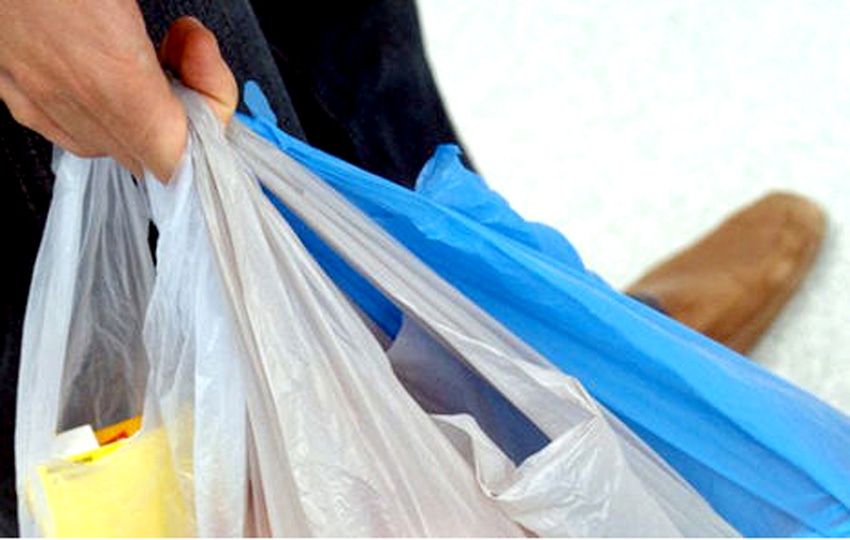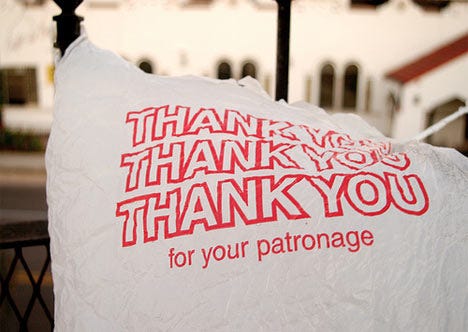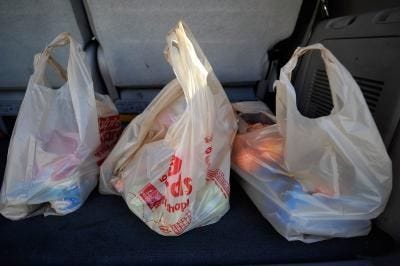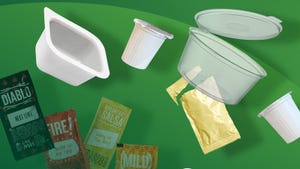Plastic shopping bags: From modern marvel to public enemy no. 1
There aren't many subjects that are relevant to every single country, region, city, town and rural area. Then again, when an initiative sets to get rid of an item that is present in every day life, the world is going to take notice.
February 1, 2013

There aren't many subjects that are relevant to every single country, region, city, town and rural area. Then again, when an initiative sets to get rid of an item that is present in every day life, the world is going to take notice.
Much like a controversial politician, plastic shopping bags hold the power as to completely divide families, friends, coworkers, and the list goes on. Some believe plastic shopping bags are an admirable invention that is convenient, low cost and is just fine for the environment. While the opposition views plastic shopping bags as an environmental eyesore that are polluting roadways, landfills and hurting marine life.
"Well, it's certainly a hot topic at the moment," Sukhraj Poonia, research and communication manager at PAFA, the packaging and films association in the UK told PlasticsToday. "I think there are many angles to consider, but we feel the public should realize the truth about the situation as well as clear up this whole notion that the plastic bag is this bad person. From our side, plastic bags are the most resourceful and efficient bag out there."
 From San Francisco banning retail locations in the city from distributing plastic bags to a blanket ban on plastic bags in Delhi, numerous cities around the world have enacted some sort of ordinance on plastic bags. Other places, such as Germany and Ireland, have established a fee on plastic shopping bags.
From San Francisco banning retail locations in the city from distributing plastic bags to a blanket ban on plastic bags in Delhi, numerous cities around the world have enacted some sort of ordinance on plastic bags. Other places, such as Germany and Ireland, have established a fee on plastic shopping bags.
Leila Monroe, staff attorney for the Oceans Program at the Natural Resources Defense Council (NRDC) said the council didn't start the bag ban effort, but they support it.
"I think people around the world have recognized the current way of doing business is not working and bans are sending a strong signal to both the industry and consumers," she said. "Cities will continue to work on various plastic bag ordinances and as more cities make those decisions, manufacturers, and hopefully the industry will recognize we need to move forward with a coordinated approach."
About 100 billion bags are sold annually around the world, according to SPI: The Society of Plastics Industry. Figures show 90% of all grocery bags are plastic. Some studies claim between 500 billion and 1 trillion plastic bags are used each year worldwide.
Unless you're in an area where bans are in place, there's no denying plenty of plastic bags are currently available, which means you most likely used one today without even realizing it.
In this comprehensive report, PlasticsToday will take a look at plastic shopping bags throughout the supply chain, including inception, potential impact on the environment, an in-depth look at the economic effect of bag bans and taxes, end-of-life management and plastic bag alternatives. In addition, part of the series will offer readers a tour of Hilex Poly, one of the leading manufacturers of plastic bag film products and the operator of the largest closed-loop plastic recycling facility in the world.
A bag full of new opportunities
Prior to the 1960s, paper bags were the standard for carrying groceries. Still, some believed paper came with its limitations and engineers were on the hunt for better alternatives.
Plastics itself was present at the grocery stores, SPI says they have been used as sandwich bags since 1957.
Swedish engineer Sten Gustaf Thulin is recognized as the inventor of the lightweight plastic shopping bag. In the early 1960s, Thulin created this packaging by folding, welding, and die-cutting a flat tube of plastic. Celloplast of Norrköping, Sweden eventually patented this concept of a fairly simple bag that could carry a heavy load.
From there, plastic bags gained footing as produce bags in grocery stores, bread packaging and trash bags.
Gloucester Engineering created some of the first plastic bag making machines in the 1960s. Carl Johnson, president of Gloucester Engineering, said the company started with bottom seal bag machines (trash bags) and the company also made bag machines for garment film bags, which had a sloped shoulder to follow the contour of the hangear. The company eventually produced side welded bag machines.
As the bags gained momentum, other companies saw the financial potential and U.S. petrochemical company Mobil eventually overturned Celloplast's U.S. patent in the late 1970s.
The phrase 'paper or plastic?' is coined
Gordon Dancy is the person behind the high-density plastic grocery bag that is used today. Reports claim that Dancy was concerned about the destruction of trees to manufacture paper bags. At the time, he believed plastic bags would not only save money, but also be better for the environment.
Dancy's invention was made public in 1977 and the plastic grocery bag was introduced to the supermarket industry  as an alternative to paper bags. In 1982, supermarket chains Kroger and Safeway began using the modern-day polyethylene t-shirt shaped bag.
as an alternative to paper bags. In 1982, supermarket chains Kroger and Safeway began using the modern-day polyethylene t-shirt shaped bag.
Traditional plastic shopping bags are made from polyethylene, which is produced from the monomer ethylene. In the U.S, ethylene is primarily made of ethane, a waste by-product obtained from natural gas refining, meaning that domestically produced plastic bags are not made of oil, according to Stephen Joseph with SaveThePlasticBag.com.
Depending on the supplier, the plastic shopping bags are high-density or low-density and are manufactured through blown film extrusion.
From the mid-1980s to our present day, plastic bags have been a staple that help consumers carry groceries from the store to their vehicles and then to homes. While plastic grocery bags were 2.3 mils (thousands of an inch) thick in the late 1970s, they were down to 1.75 mils by 1984. In 1989, new technology gave the industry the same strength and durability in a bag that was about 0.7 mil thick. A bag weighing less than one ounce can carry up to 44 lb.
Johnson said both plastic bags and bag-making machines have evolved quite a bit over the years.
"Just like everything else in the world, the bags have become thinner, stronger and lighter," he said. "The bag machines themselves have become more accurate, faster, easier to set up, and run faster. The hydraulics have been replaced by servo drives and motors so they don't leak anymore."
When it comes to paper or plastic, Johnson believes paper bags can't touch plastics strength-to-weight ratio and plastic doesn't fall apart when it gets wet. It consumes far more energy to transport the same number of paper bags as it does for plastic, he said.
Still, there is a downside to having something be so "efficient."
"Plastic bags are incredibly convenient and can be reused and ultimately recycled," Johnson said. "They are produced so efficiently that we don't view them as a valuable resource and this often hurts the recycling effort."
Things began to change regarding the perception of plastic bags in 2002 when the Bangladesh government became the first in the world to ban their use. The government made this move after it was found that plastic bags contributed to blocked drains and waterways, which caused severe flooding.
This started a war of plastic bags.
Read part 2 of PlasticsToday's comprehensive plastic bag ban report.
Read part 3 of PlasticsToday's comprehensive plastic bag ban report.
About the Author(s)
You May Also Like


